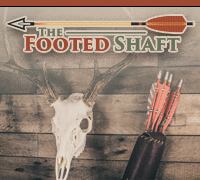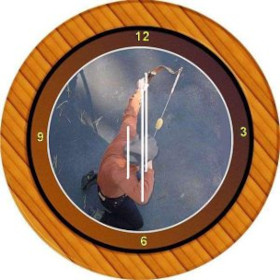So I pulled out some calculators, graph paper and bows. In addition, I used a bunch of Newton's formulae and a bit of swearing, and came up with the definitive answer for where spine came from and how to eliminate its necessity. That said, it's not very easy to eliminate. It is real world possible, though.
Spine is a consequence of archer's paradox. This is a given. But archer's paradox is also a consequence of torque on the bowstring. The videos I posted above bear witness to the relationship between torque and paradox, but there's more to it as well.
I then had to create a torqueless release. There are two ways to do so. One is a mechanical release with a rigid loop so that the string itself is not torqued. The other is the First Peoples pinch grip, which makes no contact with the string. There is no rotational torque because the string does not roll off of fingers, thumb or thumb ring. The arrow at this point can be aimed at the target and the bow moved slightly to the side, and the arrow will not flex around the riser. If the arrow is in the true center of the riser, it can simply be aimed at the target and released. Proper arrow flight in this circumstance would be with the stiffest arrow possible, so as to take up and down flex out of the equation, though for all but the limpest of arrows the fletching can more than compensate.
The cleaner the release, the wider the spine tolerance and the stiffer the spine that will give good results. I normally shoot with a long Turkish ring. When I switched to a short Turkish style, the string was rolled on the ring less and my accuracy improved. My experiments with both Shang dynasty and Qing dynasty rings show even better flight characteristics and almost complete spine agnosticism.
I then took my wife's Ragim Matrix out. Using a three under or split grip, a 1535 was necessary to proper flight, as I expected it to be. Spine was paramount in tuning. When I used a Manchu (Qing) ring, I could shoot 7595s just as well. With a pinch grip my 120# warbow arrows would fly like the 1535s. Spine is the relationship of string torque to arrow flexibility, and the type of bow, arrow, string and release all factor in.
I'm going to contact a friend to bring a video camera over so I can repeat my experiments on tape.
Yes, spine is paramount to certain setups. Other setups may care little to none. But it's a functionality of total setup, not just release type. I'll work out my equations and post the results if you guys are interested.














